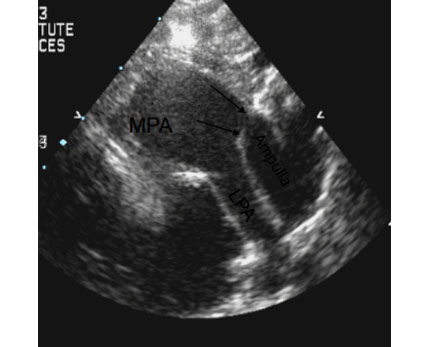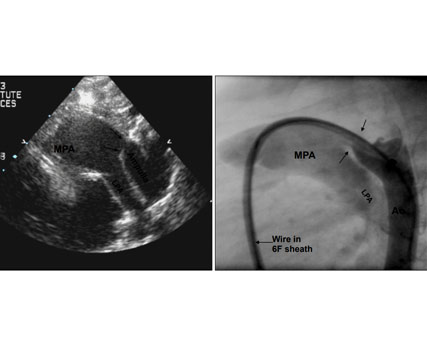PDA Device Closure
Patent Ductus arteriosus
- A patent ductus arteriosus is a persistent communication between the two great arteries
– Aorta and pulmonary artery - In the mothers womb, developing babies have a blood vessel that called ductus arteriosus
- Ductus arteriosus closes soon after birth
Patent Ductus arteriosus
- PDA occurs when the ductus arteriosus does not close
- It is a common congenital defect
- When the PDA does not close, blood from the aorta flows into the pulmonary artery
- This causes strain on the heart on the lungs
- If untreated, it leads to breathing difficulty, respiratory infections and heart failure
PDA
Timing of Intervention: PDA
- Large PDA with PAH and symptoms: 1-3 months.
- Moderate sized PDA( 3- 4mm) : 6 months.
- Small PDA( < 3mm): 6-12 months.
- Silent PDA : no treatment.
Procedure
- A catheter is inserted into the blood vessel in your childs groin.
- Pressures in the heart and the size of the defect is assessed.
- An appropriate device is placed across the defect using a special catheter.
- The device fills the defect and the defect is closed
- The catheter is removed
Mode of closure: PDA
- 90% can be done in cath lab: coils/ device
- Current indication for surgery:
Large ( > 4mm) PDA in a very small infant ( < 5 kg)
Mode of closure: PDA
- 90% can be done in cath lab: coils/ device
- Current indication for surgery:
Large ( > 4mm) PDA in a small infant ( <4 kg)
The PDA Occluder
- Greater ease, better control and precision during deployment
- Size of the duct and shape of the duct is less of an issue (as against coils)
- Some reluctance to use the device < 4-5 kg
Trans-catheter PDA closure: Follow up
- No drug prescribed
- Advised to follow IE prophylaxis for 6 months
- Re-visits at 3 months and 1 year after the procedure
- Echo at 3 months for residual flow or recanalization
- Discharge from Follow up at 1 year





